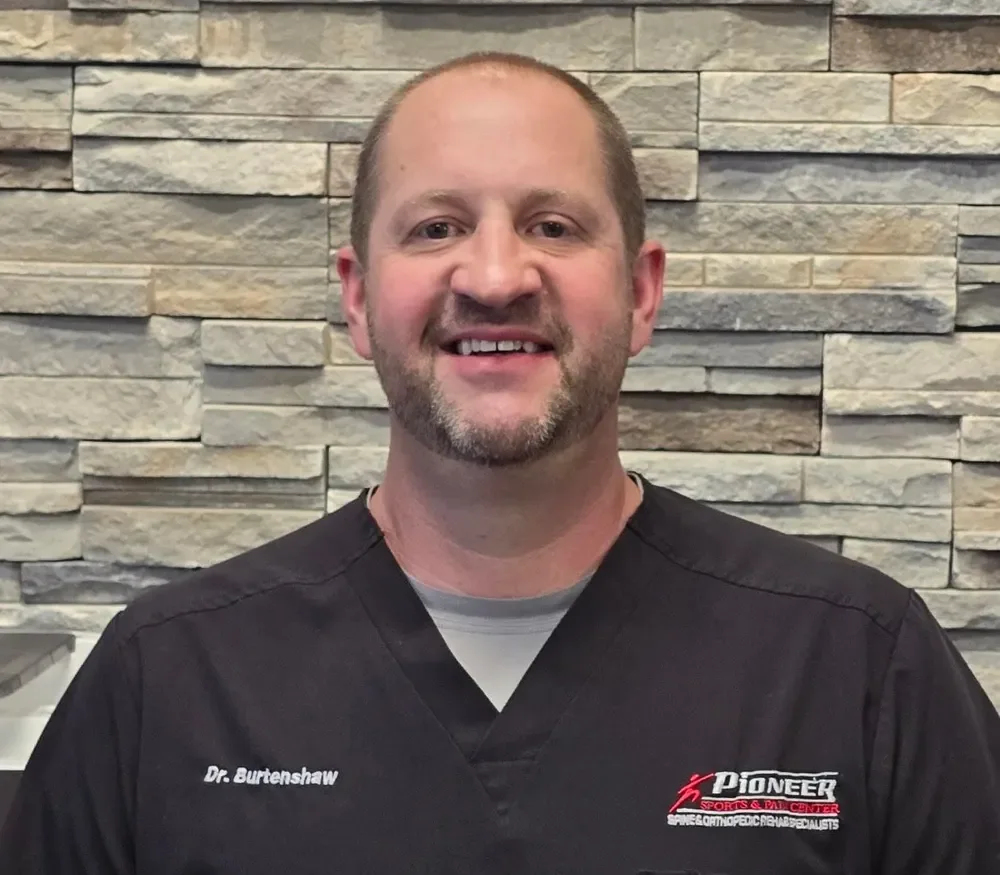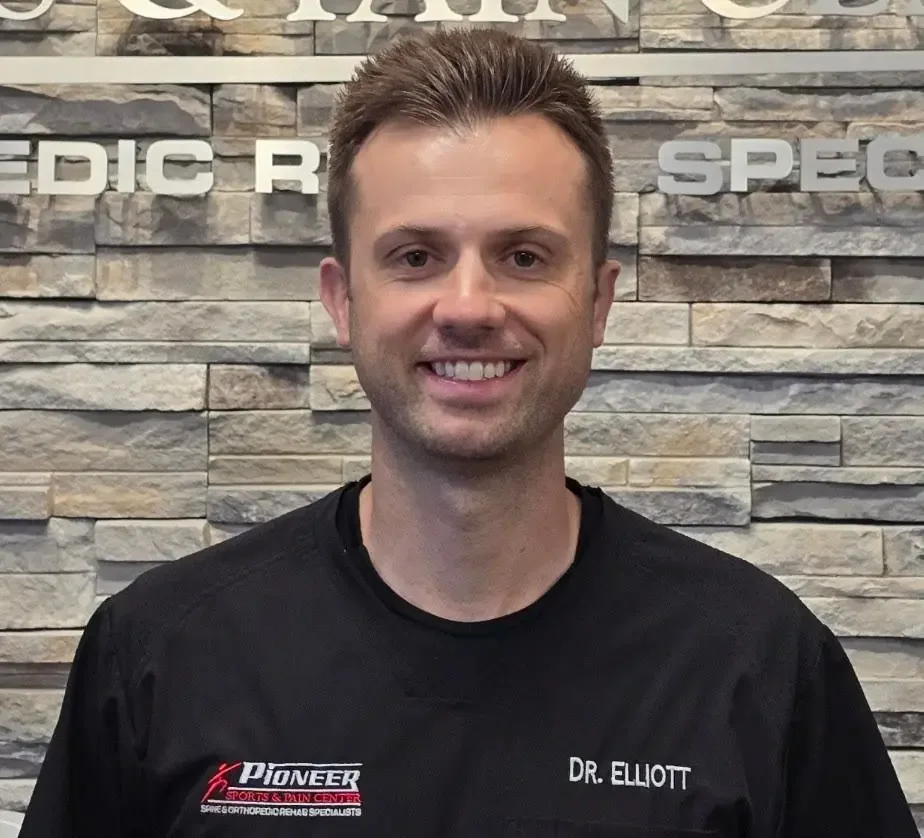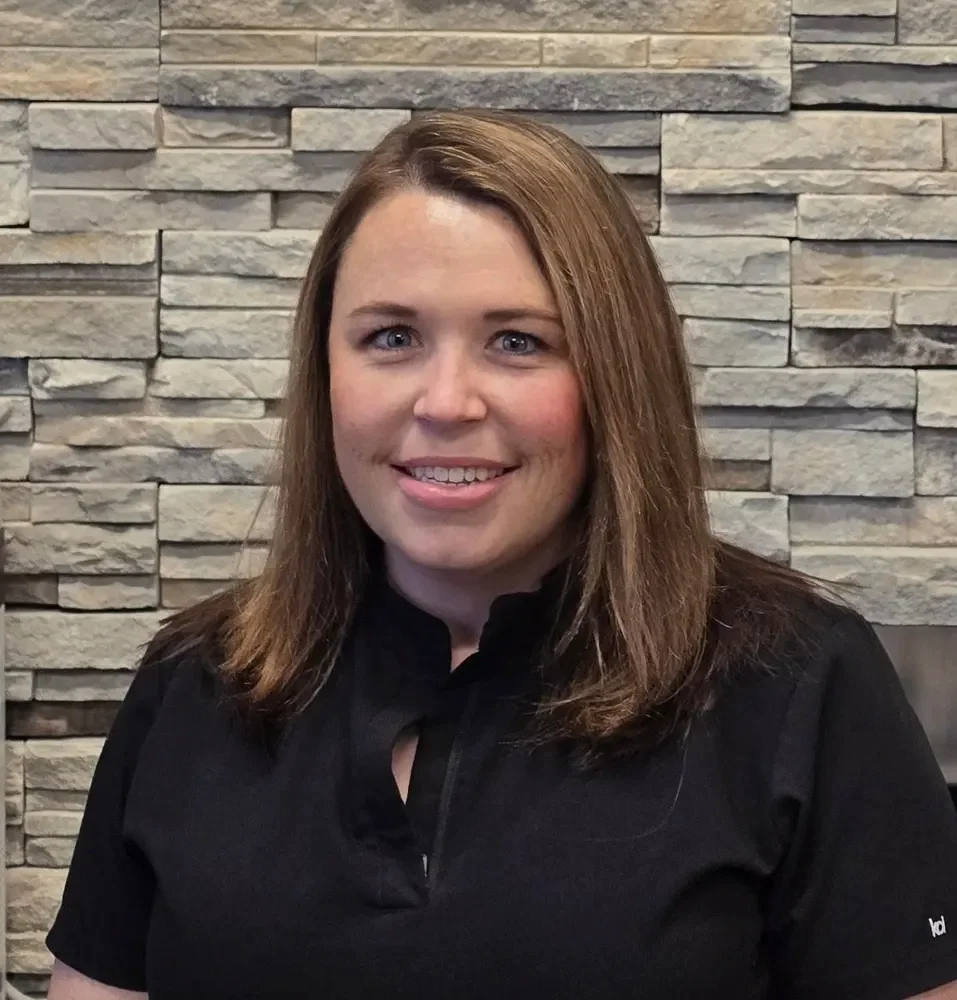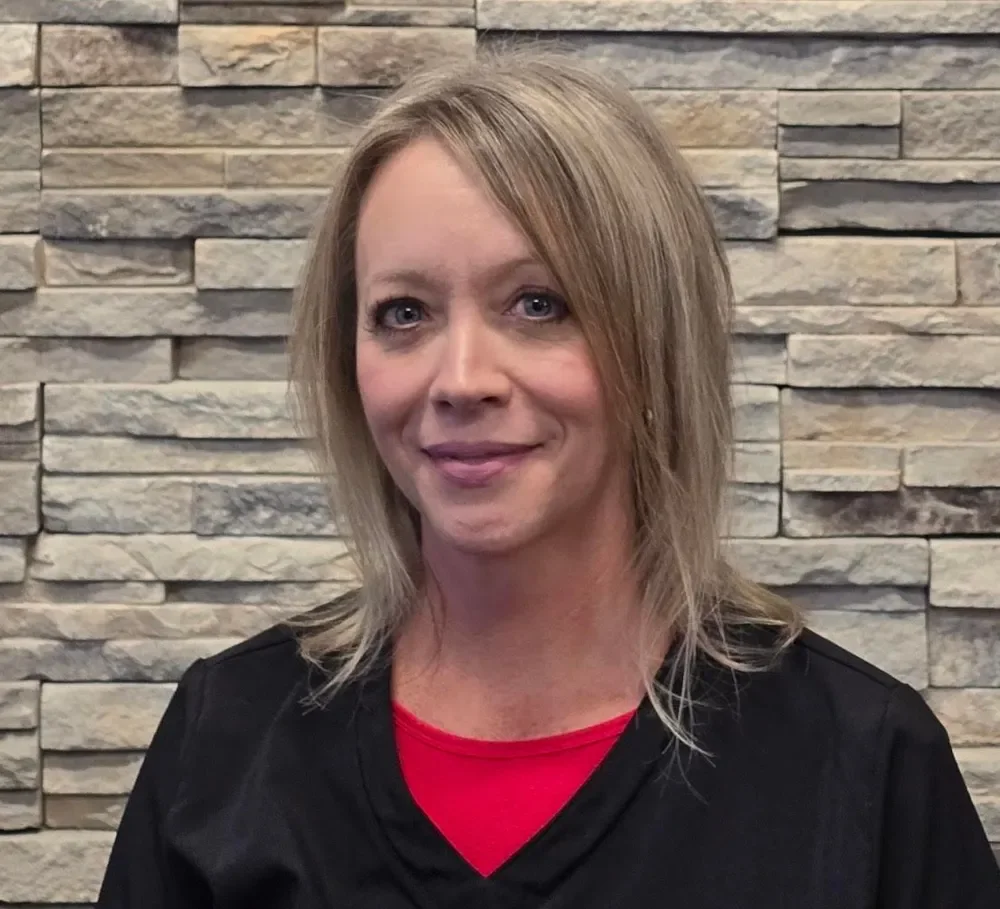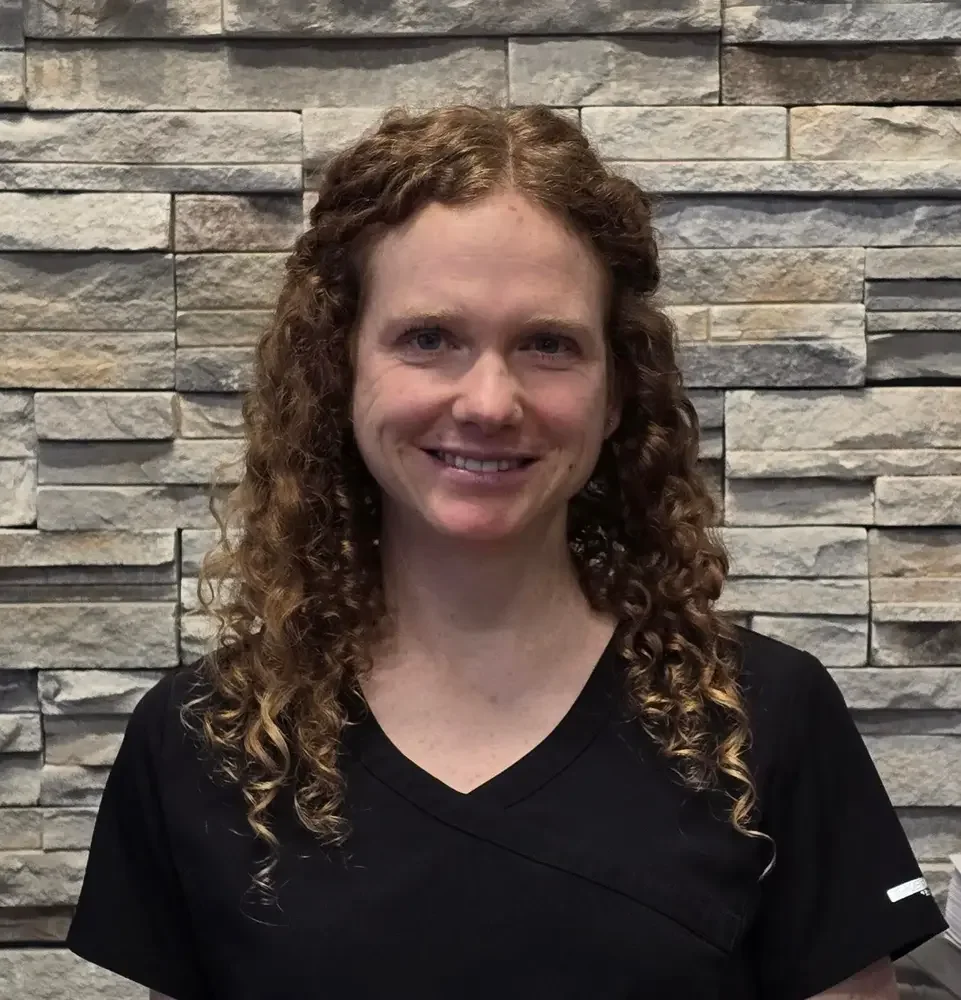Spinal Decompression in Kuna, ID
Advanced Disc Rehydration and Nerve Relief Without Surgery
At Pioneer Sports & Pain Center in Kuna, Idaho, we offer non-surgical spinal decompression therapy for patients suffering from chronic back or neck pain caused by disc herniation, bulging discs, nerve root compression, or degenerative disc disease. This advanced, computer-guided therapy provides a safe and effective alternative to surgery by targeting the biomechanical cause of spinal nerve impingement.
Spinal decompression gently stretches the spine to create negative intradiscal pressure, relieving pressure on nerves, enhancing disc hydration, and promoting long-term tissue healing.
What Is Spinal Decompression Therapy?
Spinal decompression therapy is a motorized traction treatment that applies targeted force to gently separate spinal segments and reduce pressure within the intervertebral discs. Unlike general traction, spinal decompression is calibrated and controlled using sophisticated algorithms that ensure progressive, consistent distraction and relaxation phases.
The goal is to reduce mechanical compression on spinal discs, nerves, and facet joints while stimulating the body’s natural healing process. This therapy is particularly effective for:
- Herniated or bulging discs
- Degenerative disc disease
- Sciatica and lumbar radiculopathy
- Cervical disc injuries
- Spinal stenosis
- Chronic discogenic pain
Clinical Mechanism of Action
-
Negative Intradiscal Pressure
Decompression creates a vacuum effect inside the disc, retracting bulging or herniated material back into the disc space. This relieves pressure on adjacent nerve roots and reduces inflammation in the surrounding tissues.
-
Increased Hydration and Nutrient Flow
The distraction phase also improves diffusion of oxygen, water, and nutrients into the nucleus pulposus, aiding in tissue regeneration and reversing the dehydration associated with degenerative disc conditions.
-
Reduced Nerve Root Compression
As disc height is restored and bulging is reduced, compression on spinal nerves is relieved, reducing symptoms such as sciatica, numbness, tingling, and radiating pain.
-
Pain Gate Modulation and Muscle Relaxation
Gentle traction stimulates proprioceptors and mechanoreceptors, promoting pain relief through the gate control theory and reducing paraspinal muscle guarding.
Conditions Commonly Treated with Spinal Decompression
Lumbar Spine Conditions
- Herniated lumbar discs (L4-L5, L5-S1)
- Degenerative disc disease (DDD)
- Sciatica and piriformis syndrome
- Facet syndrome
- Foraminal narrowing
- Post-surgical failed back syndrome (in some cases)
Cervical Spine Conditions
- Cervical disc herniation or bulging
- Cervical radiculopathy
- Degenerative joint disease (DJD)
- Chronic neck pain with arm numbness or weakness
Who Is a Good Candidate?
Spinal decompression is suitable for patients with:
- Chronic low back or neck pain that hasn’t responded to conservative care
- MRI-confirmed disc bulges or herniations
- Mild to moderate degenerative disc changes
- Sciatic pain, numbness, or tingling radiating into the arms or legs
- No recent spinal fractures, implants, or instability that would contraindicate decompression
A thorough physical and diagnostic assessment is performed prior to treatment to ensure safety and optimal outcomes.
What to Expect During a Spinal Decompression Session
Initial Evaluation
We begin with a comprehensive orthopedic and neurological exam, review of imaging (MRI or X-rays if available), and functional movement screening. We determine the precise spinal level and direction of decompression needed.
Treatment Process
- The patient lies comfortably on a decompression table (supine or prone depending on region).
- A harness is fitted to isolate the cervical or lumbar spine.
- The table’s computer-controlled algorithm gently cycles between stretching and relaxation phases.
- Each session lasts about 20–30 minutes.
Treatment Schedule
Most patients complete a series of 12–24 sessions over 4–8 weeks, depending on the severity and chronicity of their condition. Spinal decompression is often combined with:
- Chiropractic adjustments
- Soft tissue therapy
- Core stabilization exercises
- Ergonomic retraining
Benefits of Spinal Decompression
- Non-invasive and drug-free
- Pain relief without surgery
- Improves disc hydration and health
- Reduces nerve root irritation
- Enhances posture and movement efficiency
- Improves functional mobility
- Supports long-term disc integrity and core function
Why Choose Pioneer Sports & Pain Center for Spinal Decompression in Kuna?
- Advanced Technology: We use precision-calibrated decompression systems to ensure safety and comfort for every session.
- Integrated Rehab Support: Your care is reinforced with corrective exercise, chiropractic, and supportive therapies.
- Evidence-Based Care: All treatment plans are designed based on current best practices in spinal biomechanics and neuromuscular rehabilitation.
- Trusted by the Community: We serve patients across Kuna, Meridian, Nampa, and the Treasure Valley region who seek non-surgical relief for spinal conditions.
Frequently Asked Questions (FAQ)
Is spinal decompression the same as regular traction?
No. While both apply a stretching force to the spine, decompression uses controlled, progressive tension cycles that stimulate healing and allow muscle relaxation without triggering the body’s protective “guarding” reflex. This makes it more effective and more comfortable.
How soon will I feel results?
Some patients feel relief after just a few sessions, while others notice gradual improvement over several weeks. Full therapeutic benefit usually occurs within 12–20 sessions as inflammation subsides and disc healing progresses.
Can spinal decompression help avoid surgery?
In many cases, yes. Patients with mild to moderate herniations or degeneration have been able to avoid spinal surgery by completing a structured decompression program combined with rehab.
Is spinal decompression safe?
Yes. The therapy is non-invasive and highly controlled. We thoroughly assess your condition to ensure you are a good candidate before starting. Patients with instability, recent spinal fractures, or spinal implants may not be suitable.
How long do the effects last?
Long-term success depends on following through with the full care plan, including postural correction and core strengthening. Many patients remain symptom-free for months or years with proper maintenance care.
Does insurance cover spinal decompression?
Some insurance plans cover decompression therapy when medically necessary. We’ll verify your benefits and provide a detailed estimate before beginning care.
Can I receive decompression if I’ve had surgery?
Possibly. If the surgery was not recent and there are no metal implants or severe instability, decompression may be appropriate. We’ll review your surgical history and imaging to determine eligibility.
Schedule a Spinal Decompression Consultation in Kuna Today
If you’re suffering from herniated discs, sciatica, or degenerative spine issues—and want a non-surgical solution—spinal decompression may be exactly what you need. Let the team at Pioneer Sports & Pain Center help you regain comfort, mobility, and quality of life. Call our Kuna office today or book online to get started.

